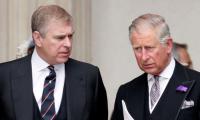The story of modern China is fascinating. It shows us how Chinese defeated all odds, and how they consolidated their position through sheer hard work and dedication.
The story can be understood by dividing it into six phases: revolution, resurgence, resistance, reform, rise and rejuvenation (6-Rs).
The story starts with a fight against foreign forces and the cruel elite class of the country.
Foreign forces had imposed a century of humiliation. They were destroying the society systematically.
They introduced opium culture and captured the productive resources of the country. The United Kingdom took over Hong Kong, Japan occupied Taiwan, Germany took Qingdao and the USSR claimed large parts of the Northern region (equivalent to the combined size of Germany, France and the UK).
The domestic elite groups were busy suppressing people and extracting benefits for themselves.
Against this backdrop, the Communist Party of China (CPC) emerged as a ray of hope for people who organised themselves under its banner. The CPC led the people to revolt against the cruelties of foreign and domestic forces. It defeated both forces and established the People’s Republic of China. From here, the second phase of resurgence started.
CPC had to rebuild a devastated country. The retreating forces severely damaged the production base.
They tried to destroy industries, agriculture infrastructure and irrigation infrastructure, which caused inflation and higher unemployment. This was done to weaken the newly-established country and break the people's trust in the CPC. It was a difficult situation, but it could not weaken the confidence of the CPC leadership.
The leadership was successful in managing the challenges of inflation and unemployment and paved the way for future development.
Simultaneously, China had to build a resistance momentum. Korean War, harsh attitude of Western countries, differences with the USSR and elite elements in the society were constant irritants. The West was not ready to work with CPC and was trying to erect all sorts of hurdles.
They ran anti-CPC and anti-China campaigns. They did not establish diplomatic and economic linkages with China. The situation was further complicated after differences developed with the USSR. On top of that, remnants of the elite class and anti-revolution forces were disturbing the society. Chairman Mao introduced different programmes and theories to fight against these challenges, such as Great Leap, Cultural Revolution, Ten Major Relationships, Third Front and Three Worlds theory.
The results of these interventions were mixed, but China sailed through the challenges under Chairman Mao's and CPC's leadership.
China did not compromise on its sovereignty, independent policy space or ideology.
It started to chart its own course and laid the foundation for socialism with Chinese characteristics.
The resurgence and resistance phases overlapped, but these provided solid ground for building the country.
China, building on the success of previous phase, introduced reforms. It reformed production process, markets, pricing and land ownership system.
China presented and implemented innovative ideas like dual pricing, household responsibility contracts for land and agriculture and responsible contracts for industry and enterprises.
Town-village enterprises were utilised to build an industrial base and to introduce competition in the Chinese markets.
The production forces shifted from massive labour, massive material and capital to efficient production processes. China also initiated process of opening the market for foreign investment and building a unique model of Shenzhen Special Economic Zone.
As a result, Chinese exports rose, reaching $68 billion in 1992 from $9 billion in 1980. On the other hand, China invested in science and technology to sustain and further accelerate growth and development.
It started 863 programmes in different fields, including biotechnology, space technology, information technology, laser technology, automation technology, energy, advanced materials, etc. in 1986.
However, joining the World Trade Organisation (WTO) in 2001 revolutionised the whole economic structure of the country. Although, China was developing at a good pace after reforms started in 1978, but joining the WTO changed the whole dynamics.
Statistics show total volume of Chinese economy at the time of joining WTO was $1.3 trillion, and the country was in 6th place in the global ranking.
The total trade of China at that time was $0.51 trillion: again, it was in 6th place at the global level. Owing to enhanced connectivity due to WTO and continuous efforts, China is the second largest economy, with a total GDP of almost $18 trillion in 2023. It is the biggest trade partner (goods and services) in the world, with a total trade of $6.78 trillion.
Simultaneously, President Xi Jinping introduced his dream of national rejuvenation. Rejuvenation is a new goal, and China is working to achieve it before 2049. President Xi’s dream is not limited to his people; it has global relevance. It promotes cosmopolitism. Since then, China has been striving to achieve the goals of Community with a Shared Future and dream of national rejuvenation.
Under his leadership, China launched numerous programmes and initiatives like Belt and Road Initiative, Global Development Initiative, Global Security Initiative, Global Civilisation Initiative, Ecological Civilisation, Asian Infrastructure and Investment Bank, China International Import Expo, etc.
On the domestic front, he launched New Philosophy of Development, High-Quality Development, New Productive Forces, a dual circulation model, a three-dimensional transport network plan, rural revitalisation, etc. China has also multiplied investments in science and technology, research and development, innovation, quality human capital creation and agriculture development and diversification.
The investment helped China become a leader in the fields of technology and innovation. According to Australian Strategic Policy Institute, China is leading in 37 out of 44 most critical technologies like artificial technology, nanoscale material and manufacturing, smart materials, advanced explosives and energetic materials, advanced radiofrequency communications, hydrogen and ammonia for power, electric batteries, photonic sensors, drones, swarming and collaborative robots, synthetic biology, etc.
China also achieved the first centenary goal and eliminated absolute poverty. China is now only a poverty-free country.
It has also achieved self-sufficiency in grain production. Statistics show China produced 695 million tons of grain in 2023. In a nutshell, successful execution of policies, plans, and implementation frameworks helped China overcome all odds and accelerate economic development and social welfare of society. It is also helping China move on the path of rejuvenation.
Unidentified attackers stabbed him to death before they managed to escape
Munawar Ghous said he had made clear to officers to make sure transparency in providing Zakat to deserving people
About 11,000 cows and buffaloes would be given free of cost to widows or divorced women up to 55 years of age in rural...
Dr Shah says that MNCH programme, in collaboration with JICA, has been operating in remote parts of KP, including...







